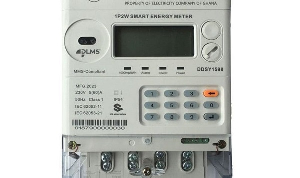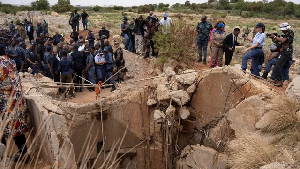With Ghana’s coronavirus case count soaring from zero to 2719 in less than two months it is almost impossible to relegate questions and controversies that aims at thoroughly scrutinizing the government’s interventions so far.
One major question which when answered could determine the country’s fate in fighting the virus is whether or not cases have reached a peak yet.
Per the World Health Organisation’s standards and data, a country that reaches its peak is at the worst stage in terms of cases being recorded and the number of deaths. After the peak stage, however, is the declining stage where a country is expected to record low numbers.
Ghana’s situation, however, has been described as an awkward one due to the absence of real-time data which practically makes it difficult for analysts to do a proper diagnosis of the data and make predictions or assumptions as seen elsewhere.
After almost two months of clearing backlog tests, Ghana now has 2719 cases, with 18 deaths and 294 recoveries, but the question as to whether we have reached a peak remains unanswered or perhaps the answers aren’t convincing enough?
Speaking at the Minister’s press briefing on May 6, 2020, at the Information Ministry in Accra, the Director of Public Health at the GHS, Dr Ebenezer Badu Sarkodie in an attempt to answer a question on Ghana’s position on the coronavirus bell curve said, "So to answer directly to the question, we are at the peak of the curve…We are not off the hook yet, but then if we continue the way we are doing now – adhering to the various social distancing and adhering to the various individual preventive measures – these will let us come down from where we are.”
Despite these claims by the GHS which all intents and purposes is good news for the country, experts hold the view that the nation is nowhere close to its peak and are warning that the inability to interpret the curve more accurately could plough the country into further quagmire as the wrong policy interventions could be implemented.
Challenging the Ghana Health Service claims in an interview, a lecturer at the Department of Biostatistics, School of Public Health at the University of Ghana, Dr. Justice Aheto said there still remains a cloud of uncertainty about the true state of Ghana’s current position on the coronavirus bell curve.
He has said the government must be circumspect with case management and come clear on the pronouncement. “We are still working together in order to get reliable data that can help us estimate the prevalence of the infection and the peak of it. We haven’t got there yet so I don’t know which data he is speaking to. Something we need to know is the reproductive rate so we could tell how many people can be infected within a day to enable us to make a forecast on how many people will be affected, recovered, or dead with a specified time period.”
He added; “It is only when we have this available to us before we can say that Ghana is at its peak when it comes to the infection. But as of now, we have not been able to get that data yet. The figures they churn out are accumulated figures and not daily data. We need this data to be able to make a proper determination as to whether we are getting to the peak or we are decreasing. This has not been done yet so I don’t know which data the Ghana Health Service Director is using. In instances like this, you cannot determine at which rate you are reaching your peak.”
These conflicting statements reveal the loopholes in Ghana’s fight against the coronavirus which demands swift address.
Meanwhile, Greater Accra Region has recorded 2,332, Ashanti Region – 124, Eastern Region – 94, Central Region – 38, Volta Region – 30, Oti Region – 23, Western Region – 21, Upper West Region – 19, Upper East Region – 19, Northern Region – 13, Western North Region – 4, North-East Region – 2, Savannah Region – 0, Bono Region – 0, Ahafo Region – 0, Bono East Region – 0. A total of 294 have recovered with 18 deaths.
General News of Wednesday, 6 May 2020
Source: www.ghanaweb.com

















